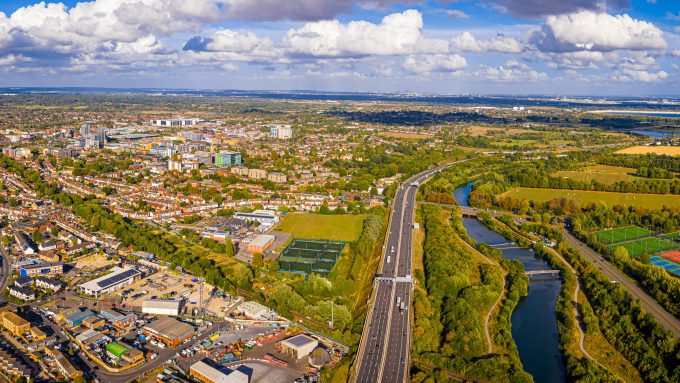
Ambition and innovation are needed to tackle London’s housing crisis

London's housing crisis is simple. The capital needs more genuinely affordable homes as quickly as possible. In this Future of Housing guest blog, James Murray, London’s Deputy Mayor for Housing and Residential Development, highlights the ways in which the Greater London Authority is encouraging the development of new homes through innovative means in order to meet growing demand.
London’s population has grown far faster than the number of new homes over the last 20 years. Its population continues to grow, and as a result, the draft London Plan identifies capacity for 65,000 new homes a year, with a target for 50 per cent of them to be affordable to curb the housing crisis. That level of delivery represents a real step change from what we inherited when we came to office.
We inherited an approach to homebuilding that was heavily over-reliant on a narrow range of development models, sites, and types of homes in London. To address this challenge, we must diversify who builds homes, and where and how they are built. The UK Government must give us the powers and resources we need to truly transform homebuilding in London. But, in the meantime, we are doing all we can to make a difference.
Since we came to office three years ago, the Mayor has secured £4.8bn from government to start building 116,000 genuinely affordable homes by 2022. We are using this funding to build new homes at social rent levels, homes for London Living Rent, and those for shared ownership. We have established strategic partnerships with fifteen housing associations, which gives partners flexible funding conditions in exchange for their agreement to deliver roughly two-thirds of their new homes as affordable housing. And in May 2018, we launched ‘Building Council Homes for Londoners’ – the first-ever City Hall programme dedicated solely to council homebuilding which last year saw more new council homes started than in any year since 1985.
Yet we recognise that the capacity and skills shortages in the construction sector pose a huge challenge to getting all the new homes we need in London built. We know that an ageing workforce means skilled construction labour will decline by nearly a quarter come 2026. And the homebuilding industry in London is especially vulnerable to possible Brexit effects; twice as many construction workers come from EU member states compared to in the rest of the UK. In other words, our ambitious targets for London will not be achieved without a significant shift in how we build homes.
Realising London’s housing opportunity
By using labour and skills more efficiently, precision manufactured housing (PMH) or modern methods of construction (MMC) present an opportunity to help tackle London's housing crisis. The ability to deliver high-quality, carbon-efficient new homes at pace and scale, and with less time on site and less disruption to neighbours, is a real opportunity for London. Yet there are a number of barriers to the greater use of these new methods that arise from the level of risk, small market share, lack of standardisation, and the difficulties that partners face accessing funding. A package of support from City Hall aims to address these challenges.
The Innovation Fund, which provides funding specifically for innovative ways of delivering new affordable homes, has supported a number of PMH schemes in the capital. The Fund has supported Pocket Living to deliver five schemes, with over 300 precision-manufactured homes completed or under construction, including a 100 per cent affordable scheme delivered in partnership with Optivo (read more about this in a previous Future of Housing blog). It has also provided a £10m development loan to support Apex Airspace to develop partnerships with London’s councils, housing associations, and the private sector to scale new opportunities to deliver extra homes on top of existing buildings.
Alongside co-funders L&Q, TfL, Legal and General and Greystar, we have commissioned the development of a free-to-use, online tool by consultancies Cast and Bryden Wood. This will help partners to undertake initial viability work for new schemes, to more quickly and easily explore opportunities to deliver homes with PMH methods and to design for manufacture. We hope this will make PMH more accessible to a greater number of partners by reducing the risks of using a particular product or supplier and building in consideration of PMH much earlier in the development process. The tool will be launched late June.
James Murray is London’s Deputy Mayor for Housing and Residential Development. You can follow James on Twitter here @jamesmurray_ldn.
This guest blog is one in a series and is part of our new Future of Housing programme. Find out more about our work in this area by visiting our new Future of Housing hub.
Are you interested in sharing your insights in this area? If you’d like to let us know about some of the projects you’re working on in this space, please email futureofhousing@cp.catapult.org.uk.
Our Future of Housing blog series is intended as a platform for open debate. Views expressed are not necessarily those of the Connected Places Catapult.





